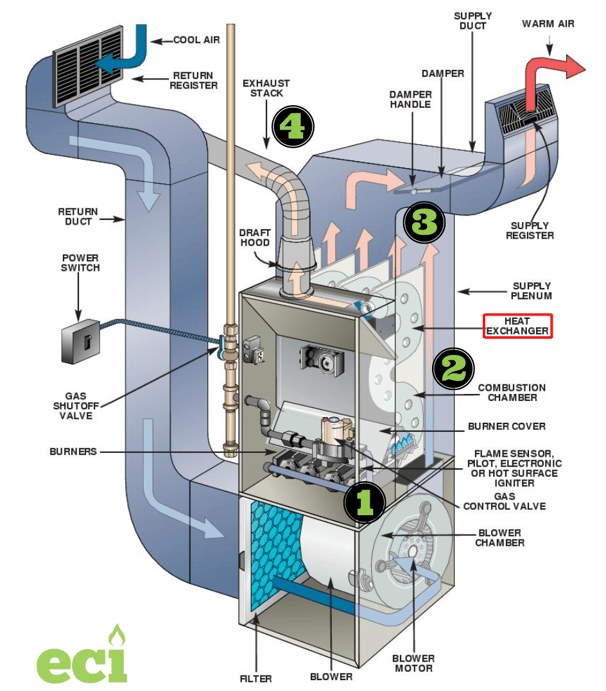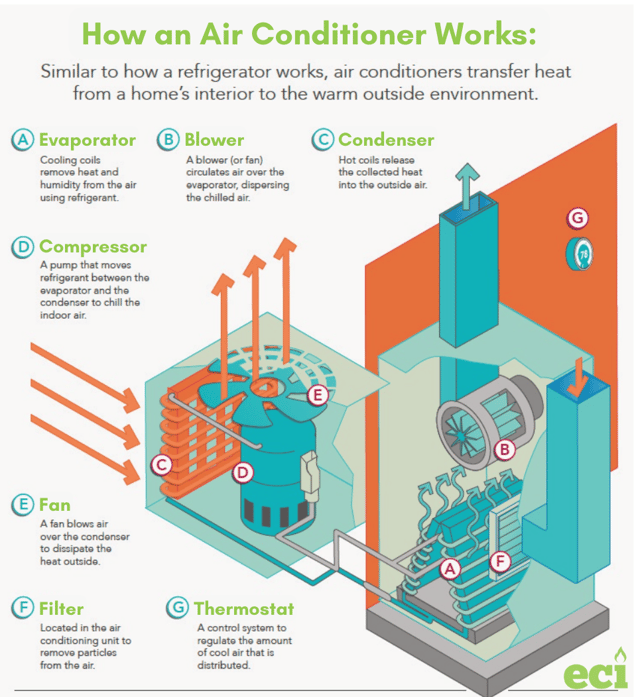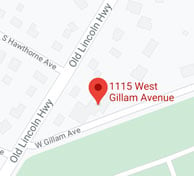
If you are an HVAC novice, you may wonder what a heat exchanger is...In this article, we are here to let you know!
What is a Heat Exchanger?
A heat exchanger is a component in an HVAC system that transfers thermal energy from one medium to another. Two main types of heat exchangers are evaporator coils and condenser coils, both of which assist in the heating and cooling of homes and buildings.
How Do Heat Exchangers Work?
How a gas furnace uses a heat exchanger

Gas furnaces are one of the most common forms of home heating systems. These units employ heat exchangers to raise the temperature of the air before dispersing it throughout the home via ducts and registers.
In a gas furnace, the heat exchanger is an airtight vessel with one hole at the bottom and one at the top, known as the flue. Here's how it works:
- The burners generate combustion gases and send them through the bottom opening into the heat exchanger.
- At the same time, a blower directs indoor air over the exterior of the heat exchanger.
- The heat exchanger uses the combustion gases from the burners to warm the air, which is sent through the supply duct to be distributed throughout the home.
- Exhaust gases from the combustion process are released through the flue to the outside of the home.
In summary, the heat exchanger plays two main roles here: exchanging heat to warm the home and keeping toxic combustion separate from the heated air.
Common furnace heat exchanger issues
As the heat exchanger in your furnace rapidly heats up, the metal expands. When the furnace completes a cycle, the heated metal cools down and contracts back to its original size. Over time, this constant expanding and contracting causes stress on the metal, which can eventually lead to a cracked heat exchanger.

A cracked heat exchanger may cause your heater to produce strange noises as a result. Additionally, a crack means that the heat exchanger is no longer forming an effective seal between the breathable air in your home and the flue air. This can lead to unsafe levels of carbon monoxide in the home, causing issues for both your heater and your health.

How an air conditioner uses a heat exchanger
Air conditioners work by removing heat from indoor spaces and transferring it outdoors. To do so, a chemical called refrigerant is used to carry, absorb, and release heat as it changes from gas to liquid and vice versa. Here's how it works:
- The refrigerant moves through the various component in the air conditioner, moving heat as it goes.
- The refrigerant starts out as a low-pressure liquid in the evaporator coils -- located in the indoor unit.
- A fan blows the warm air from indoors across the coils and the refrigerant changes into a gas as it absorbs the heat from the air. The room is cooled as a result.
- Now a low-pressure warm gas, the refrigerant travels into the compressor—usually located in the outdoor unit—where it converts into a high-pressure, hot gas.
- The refrigerant moves into the condenser, also in the outside unit.
- As air flows over the condenser coils, it carries away heat from the refrigerant, causing the refrigerant to change into a high-pressure, cool liquid.
- The refrigerant will cool off even more in the expansion valve before returning to the evaporator to absorb more heat to carry out of the building.
In summary, the entire air conditioner could technically be considered the heat exchanger, but the condenser is the main component responsible for heat transfer.
If you live in the Delaware Valley/Greater Philadelphia area and would like to find comfort within your home, visit our website or give us a call at 215 - 245 - 3200 to learn more.



